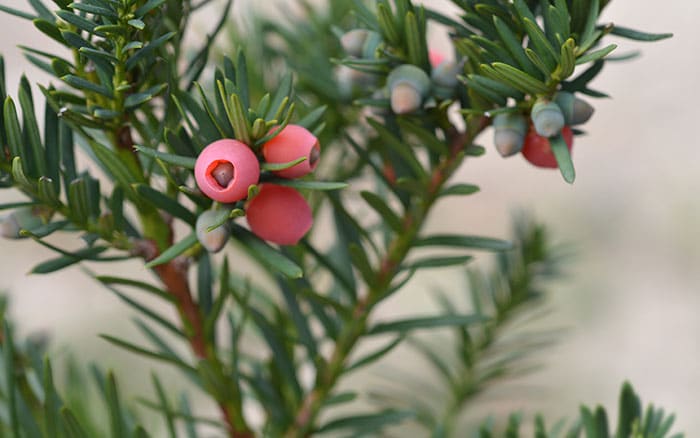There’s nothing quite like the sight of a flower border at the height of its full floral flush to make the heart flutter and delight the senses. So I wanted to share some of my top plants for the back of the border.
There are a few guiding principles to follow when choosing plants for a border that backs on to a fence, wall or hedge, the most obvious being to check whether the border is in full sun or shade for most of the day and to choose plants that grow well in the appropriate conditions.
Another is to arrange plants in order of height with the shortest at the front and tallest at the back so that each plant can be seen and to avoid some plants being obscured or covered. As most of our gardens don’t have the luxury of being able to have massively wide borders the ultimate width of a plant is important to think about as well as its height as too wide will not only outcompete and cast shade on other plants, but also mean far fewer plants in the border.
When considering those back of border plants think about whether you want the border to have some permanent interest and if so then all or some of those plants should be evergreen.
Evergreen shrubs
Narrow and upright
Shrubs with a ‘fastigiate’ habit generally grow slim and upright so that’s a good descriptive word to look out for when deciding which ones to choose. Something like a yew or juniper repeated down the line of the border is a good starting point and they will have the added advantage of not shading out other plants too much.
Taxus bacata ‘Fastigiata’ (Irish Yew)
This is a relatively slow growing slim upright evergreen version of our english yew with small narrow needles and will grow well in full sun or part shade. There is also a golden called ‘Aurea.’
They provide year round vertical interest and also look great grouped with other yews pruned into ball or pyramid shapes. Be aware though that these shrubs can produce red fruit, parts of which can be poisonous if ingested, although regular trimming of the shrub to keep its shape usually stops it producing many berries.
- Evergreen foliage for year round interest
- Fully hardy
- Grows to 12m tall and 4m wide
- Fertile, well-drained soil
- Full sun, partial shade, or full shade
- Exposed or sheltered

If the border is long enough a good design tip is to repeat the same shrub or group of shrubs along its entire length to create a unified planting scheme making a great backdrop for selections of flowering plants to be placed amongst.
Juniperus scopulorum ‘Blue Arrow’ (blue rocky mountain juniper)
A shorter, slower growing lovely alternative are these pencil shaped conifers with their vivid blue evergreen foliage and very narrow compact branches. From a practical point of view they don’t need any routine pruning, permanently keeping their thin, neat upright shape, and tolerate most soils and conditions if given free draining, moist soil.
- Evergreen for interest all year round
- Fully hardy
- Grows to 2.5m tall and 50cm wide
- Well-drained
- Full sun or partial shade
- Exposed or sheltered

Fatsia japonica (Japanese aralia)
These tough, evergreen, shade loving shrubs are perfect for a hardy, touch of the exotic look with their large, glossy, deeply lobed leaves and round, creamy white flowers which appear in the autumn.
- Flowers in autumn
- Hardy
- Grows to 4m tall and 4m wide
- Moist but well-drained soil
- Full shade, partial shade, or full sun
- Sheltered

If your soil is neutral to acidic Camellias can make wonderful back of border plants and there are a range which flower from late winter to early spring and providing a shiny leaf backdrop throughout the year.
HERBACEOUS PERENNIALS
With or without evergreens tall herbaceous perennials are a fantastic way of adding colour and height to the back of a border. Some, like Delphiniums, have rigid upright stems whilst others like Cephalaria gigantea (Giant Scabious) a loose, gentle, nodding habit.
Veronicastrum virginicum ‘Fascination’ (Culver’s root)
With their tall thin wiry spires of flowers veronicastrums are ideal for adding colour to the back of a border. This tall cultivar has lilac-rose coloured flowers over a long period from mid to late summer and grow well in sun or semi shade. They’re also marvellous plants for attracting pollinating insects.
- Flowers summer to autumn
- Hardy
- Grows to 1.5m tall and 1m wide
- Moist but well-drained soil
- Full sun or partial shade
- Exposed

Cynara cardunculus (cardoon)
If space is not limited then the thistle like silver foliage of these majestic old Victorian favourites will add a theatrical touch to any sunny border with large purple thistle like honey scented flowers, fantastic for attracting pollinating insects.
If the flower heads are left on the plant after they finish flowering, they not only provide winter interest but also food source for birds like finches.
- Flowers in summer
- Hardy
- Grows to 2m tall and 1.5m wide
- Moist but well-drained soil
- Full sun
- Exposed

Eupatorium maculatum ‘Riesenschirm’ (Joe pye weed)
For late season flowers, this quick to establish tall plant is a great choice. It produces large fluffy, purple-pink flowers on purple stems and butterflies love them! It’s another plant where the seedheads can be left on over winter.
- Flowers in autumn
- Fully hardy
- Grows to 2m tall and 2m wide
- Moist, well-drained soil
- Full sun or partial shade
- Exposed


Leave A Comment